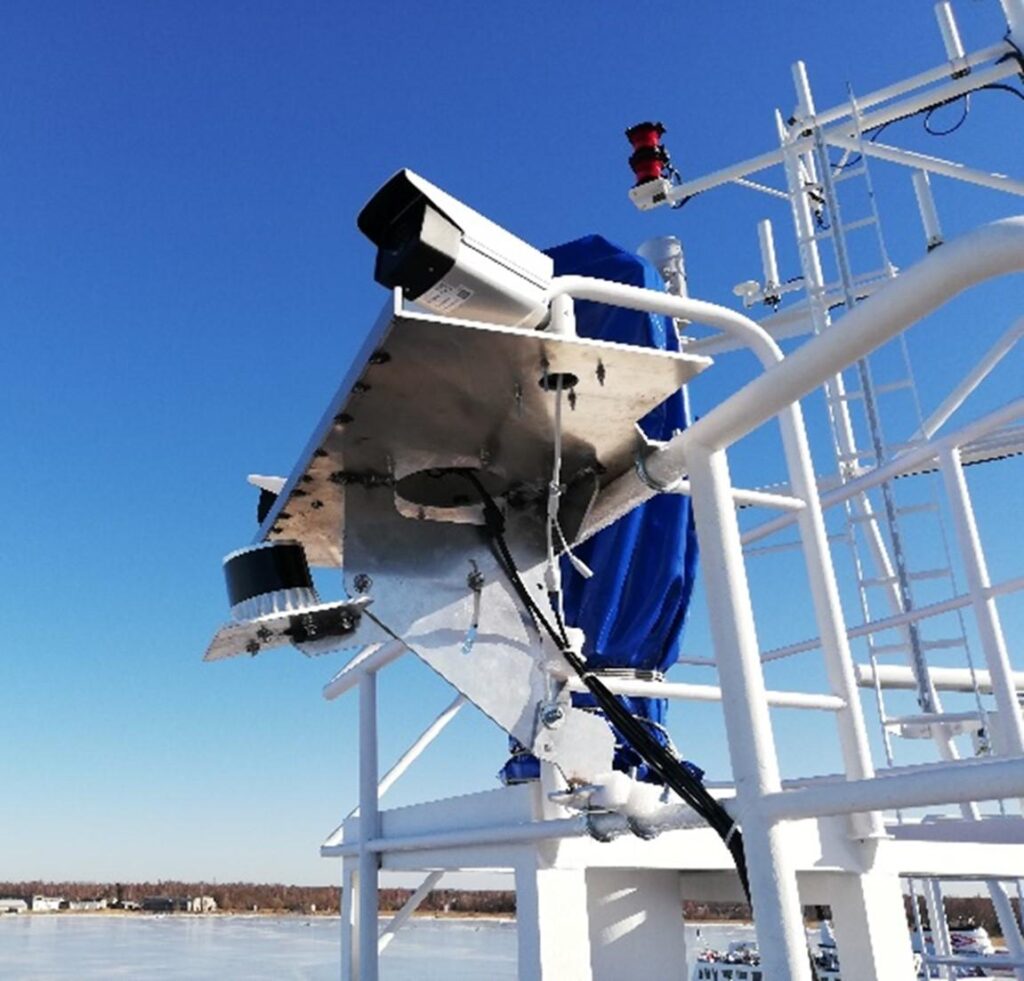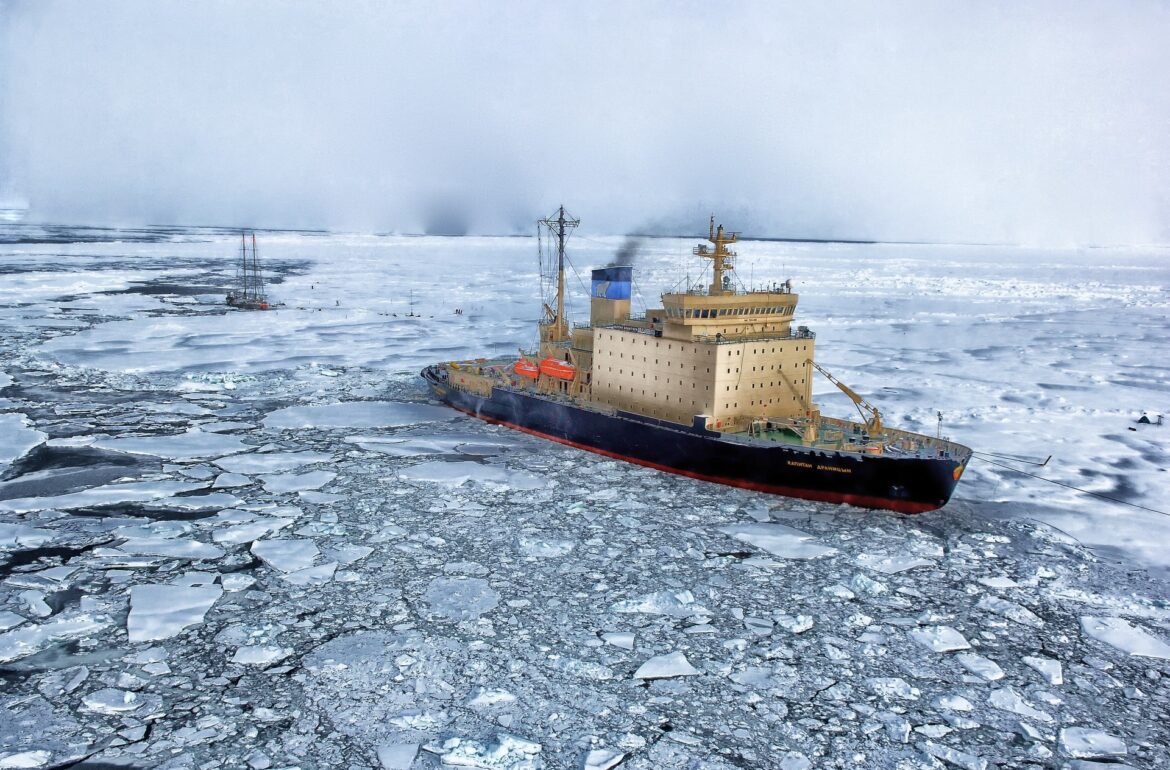Table of Contents
The “Icebreaking for a Greener Future” project, funded by Bifrost Tug Estonia OÜ in partnership with Enterprise Estonia (EAS), is based on a design and concept created and developed by Bifrost Tug. The project aims to develop and validate, on a full scale, an innovative icebreaking approach that uses a much lighter vessel to break ice more efficiently.
Ice Breaker Concept
The aim of the “Energy-Efficient Icebreaking Technology” project is to develop and validate in real scale a novel ice breaking concept that allows to break ice with significantly lighter ship and thereby provide ice breaking service with significantly reduced fuel consumption. This is achieved via detachable ice-breaking bow, where the ice is broken in a three-point bending mechanism removing the need for large ship mass that is required for conventional ice breaker.
Furthermore, as the bow is detachable and can be attached to, for example, a tugboat, the ice breaking capacity is engaged only when it is needed. During ice free season the same vessel can operate without the ice breaking bow. It is foreseen that in coming years the need for ice breaking services will increase due to increasing activities at seas (offshore wind parks, aqua farming, monitoring services, etc.).

In 2023 the model scale experiments were conducted in the ice test basin of Aker Arctic in Finland. The testing provided valuable insight into the ice breaking mechanism and the behaviour of the concept in different ice conditions. While the bow was performing as expected in the level ice, the broken ice field introduced challenges as the broken ice floes were piling up at the underwater hull of the bow. Designs were revised and the actual full-scale prototype was produced in Norway, instrumented with measuring equipment in Estonia.
The real-scale sea trials were conducted in Pärnu in the winter 2024. During the trials, the bow was tested in the broken ice channel, in larger broken ice floes and level ice field. Experiments provided further insight into ice mechanics and ice-structure interaction. Provided both the valuable input for further development of bow design and the validation data to improve the numerical simulation approached.
The project continues with additional design iterations that will consider the model tests’ findings and the real-scale field tests. With the theoretical design concepts established, there are still several practical issues to overcome that such a novel design faces harsh and unpredictable environmental conditions during ice season.
Sea-Ice Detection and Characterization Concept
Even though autonomous navigation becoming popular in every mode of transportation, autonomous marine transport still at its early stages. Despite there have been significant developments in marine transport autonomy in recent years, still there are significant gaps which need to be bridges to make full autonomy a reality. Situational awareness for the vessel in open sea is a pivotal part of this complex problem. Our effort is to contribute to enhancing vessels situational awareness when it is navigating in ice infested waters by detecting and characterizing the sea-ice field. In relation to the aforementioned ice breaker concept, it is crucial to identify breakable and navigable ice fields to operate the vessel efficiently.

There are various sea-ice types or classes appear on polar regions of both Northern and Southern hemispheres. Beside polar regions, the Baltic Sea enjoys a seasonal sea-ice during winters. Navigation challenges pose by seasonal sea-ice are not any less significant than multi-year ice in polar regions. To assure safe navigation in ice infested waters, the sailors need a remarkably accurate sea-ice charts with sufficient temporal resolution.
With the aim of detecting sea-ice using a combination of far and near field sensing using satellite imagery and vessel onboard sensing, TalTech’s team is working on developing necessary software and hardware solutions. Having collected a large ice image and LiDAR dataset from model testing at Aker arctic ice towing tank in 2023, they developed initial sea-ice detection and characterization algorithms using deep learning. With the current ice characterization AI model, it is possible to characterize the ice field with significantly high accuracy as shown in Figure 1 in all the ice classes present in the dataset.
The data acquisition setup developed in 2023 played a pivotal role on collecting in-situ data using various types of cameras and LiDAR. In 2024, they extended our work to collect data in real-life sea-ice conditions by carrying out field expeditions in Pärnu and Virtsu. During these expeditions, the sensing suit mounted on Liam tugboat as well as Töll passenger ferry (Figure 2).
This article is written by Kristjan Tabri and Dhanushka Chamara Liyanage and was originally published on the TalTech (Tallinn University of Technology) website.
If the fast-paced world of technology keeps you hooked, don’t unplug just yet—click through to our next article for more cutting-edge insights and innovations! Read more about How Estonian Phosphorites are potential answer and source for EU green and hight technologies!
 Back
Back



